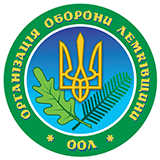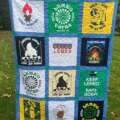Ellenville, NY – Speak to a Lemko and the conversation will inevitably turn to the fact that their mountainous homeland, Lemkivshchyna — or the Lemko region in current-day southeastern Poland – and the tight-knit community who lived there was destroyed by a series of deportations organized by the Polish and Soviet governments during 1944-1951 to force assimilation. It is as if someone broke a glass and now is trying to piece it back together, said Yaroslava Halyk, the President of the World Federation of Ukrainian-Lemko Unions (SFULO), during her talk at the Lemko Vatra festival that took place at the Ukrainian Youth Association campgrounds in Ellenville, NY on July 7-8, 2018. The festival, which has been organized for the past 18 years by the Organization for the Defense of Lemkivshchyna (OOL), is just one way that Lemkos remember and celebrate their heritage, through a weekend of music, dance, sport and camaraderie against a backdrop of rolling hills that are reminiscent of the Lemko region.
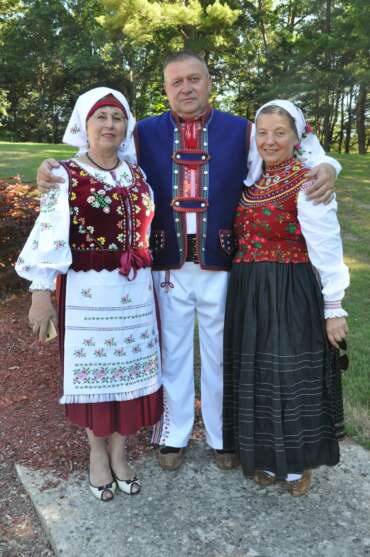
The festival’s honored guests this year included not just Ms . Halyk, whose family hails from the Lemko villages of Krzyzówka and Rostok Wielka, but also folk singer Julia Doszna, who was born in the Lemko village of Bielanka. Ms. Halyk’s family was deported from Lemkivshchyna to Soviet Ukraine during the Soviet-Polish population exchange of 1944-1946, while Ms. Doszna’s family was thankfully spared resettlement during Akcja Wisła in 1947 because it included mixed Polish-Lemko marriage. Ms. Halyk’s experience eventually led her to publish “The Memory Books of Lemkivshchyna 1944-1946,” an archival resource compiling the names and villages of all the Lemkos deported to Soviet Ukraine during that period, while Ms. Dozna channeled the sadness she felt over the resettlement of the Lemkos into her natural singing talent, which can be heard on her albums Tam na Lemkovyni (There in Lemkovyna), Choho plachesh (Why Are You Crying?) and “Immigrant.”
Below are excerpts from conversations with both Ms. Halyk and Ms. Dozsna, translated into English, about their visit to the Lemko Vatra in Ellenville and their interactions with other Lemkos in the United States.
Q: What are your impressions of the United States, including the Lemko community in the United States and the Lemko Vatra in Ellenville?
Ms. Halyk: First of all, I would like to warmly congratulate the large and, as I witnessed, friendly and cohesive Lemko community in the United States, and to wish them further successful work in preserving Lemko heritage and supporting Lemko issues in the Unit ed States and around the world. This was my first visit to the United States, as well as my first visit as President of SFULO at the invitation of OOL, which is headed by a young, energetic and very responsible leader, Mark Howansky, who is also a member of the Presidium of SFULO and the Deputy Chairman of SFULO for North America.
It should be noted that, starting from my arrival to Syracuse, NY on June 30 and throughout my 10-day visit, my work was clearly planned and well thought out. Responsible people from OOL were appointed everywhere, for every part of my meetings or talks, and performed their duties clearly and correctly. What is also very important is that next to the older, experienced Lemkos worked younger generations.
At the 18th annual Lemko Vatra in Ellenville on July 7, many people gathered, the weather was wonderful, and the celebration was extremely nice. There was a solemn opening ceremony, traditional lighting of the bonfire, sports competitions, beautiful performances, including by young artistic groups, the Lemko ensemble Na Lemkowyni and the inimitable Julia Doszna, exciting Ukrainian dances, heartfelt Lemko songs, etc. The whole concert progressed in one breath – which was fun, coordinated, and professional. The Vatra hosts, Darek Kuzmiak and Halyna Semenyak, contributed to the liveliness.
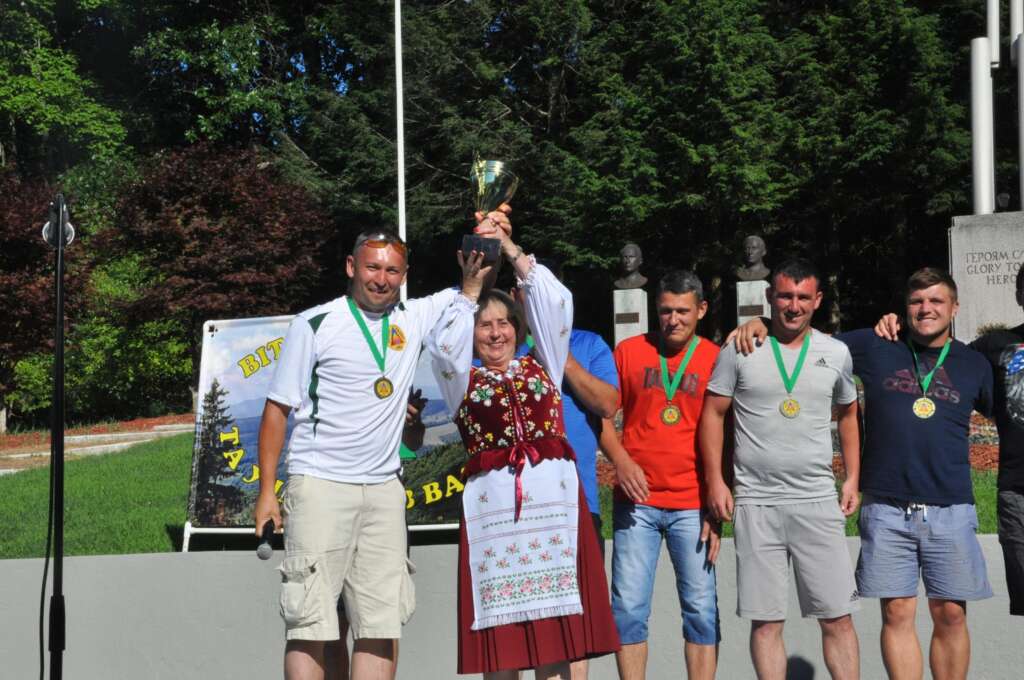
I also had interesting interactions by the Lemko History and Heritage Tent with journalists, scholars, genealogy researchers and Lemkos who just wanted to talk about their families, about Lemkivshchyna, and about Ukraine. On Sunday, I had an informal talk with guests of the festival, coordinated by Mark Howansky and President of the Lemko Research Foundation, Andriy Khomyk, which was interesting and lively; the conversation was open and sincere and, I hope, left a good impression.
And there was a delicious borsch, pierogies, and a roasted pig. Adding to the fun was the evening outdoor dance, with wonderful Ukrainian music by the live band Cheremosh. But the hospitable, sincere, heartfelt people whom I met in America left the biggest impressions on my heart. I am endlessly thankful to you all.
Ms. Doszna: I understand that the Lemko community in the United States is made up of descendants of emigrants from both the turn of the 19th-20th centuries and those who arrived in the 21st century. Both are very close to me. Among the first emigration is my family (which currently numbers over 200 relatives in the United States). They speak beautiful Ruthenian, with a wealth of words that no one remembers anymore.
During my stay, Lemkowyna, the musical group that I came to America with in 1987, was reborn in me. Why? Because I met wonderful young members from the old Lemkowyna group here, who have now founded the musical group Na Lemkowyni and who sing songs that I know from childhood. This was a wonderful encounter – meeting through song. We were so insatiable in terms of singing together. I had not sung many of those songs for over 30 years and, here in America, there was someone to sing with. Thank you very much to all the members of Na Lemkowyni. We have plans to record an album together in the future.
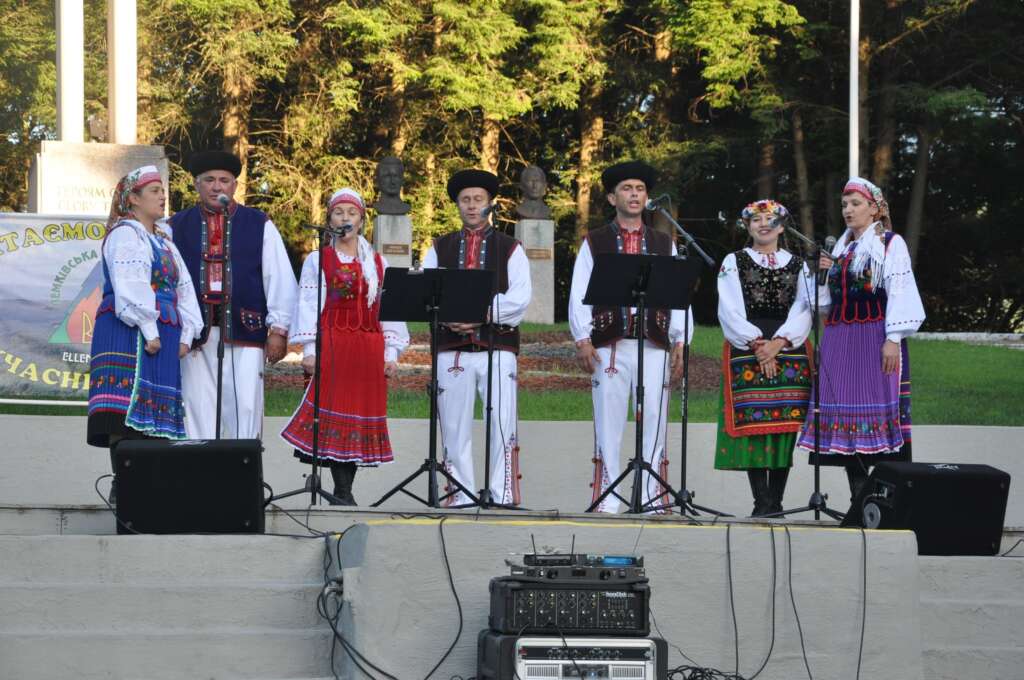
Na Lemkowyni is a new, Lemko folk group in the United States that was created in 2017. It started when the members of the group, Katarzyna Chomiak, Petro Chomiak, Mychał Chomyk, Irena Korbicz Faria, Darek Kuzmiak, Marzena Kuzmiak, Emil Skalski, and Krystyna Skalski, were asked to sing at a 70th anniversary commemoration of Akcja Wisła in Manhattan, NY. The singers were pleased that they could represent such an important yet tragic event in history, which forced the Lemkos to leave their homes and beloved land. In the past, members of the group have performed throughout Europe and the USA with other folk ensembles, such as Lemkowyna and Kyczera from Poland. Dressed in traditional Lemko attire and singing original Lemko songs taught to them by their parents and grandparents, the members of Na Lemkowyni would now like to introduce and re-introduce the younger generation to Lemko culture through music and their love for their native land. Recent performances have included the NJ Devils Ukrainian Heritage Day on March 4th at the Prudential Center in Newark. Na Lemkowyni is also currently working on an album.
The Lemko Vatra in Ellenville is very friendly and family-friendly. This beautiful place in the woods unites all generations. The people were very kind and cordial. I have never had such wonderful fun at a dance and I danced for all times. When we returned for the night, there was no sleeping, but further singing around the campfire, with an accordion. It was an amazing time. I wear it as the most beautiful treasure inside of me.
Q: What surprised or impacted you most about your visit to the United States?
Ms. Halyk: I was surprised and excited that, in the United States, there is such a large number of Lemkos who hold firmly to their authenticity. It was greatly appreciated that, at a time when many organizations have problems maintaining themselves, OOL is resurrecting its branches. It is important that Lemkos in the United States, as well as Canada, work through a single Ukrainian channel, and in youth organizations, and in public-cultural activities.
Ms. Doszna: I was surprised by my own thinking about Lemkos in America – how different it was from 13 years ago, when I recorded my album “Immigrant” in Pennsylvania and New York and I was performing concerts. It seems to me that I felt the rhythm of this land. I understood the phenomenon of life in America, which was well-illustrated by Andriy Khomyk’s Lemko Vatra t-shirt design “Keep Calm and Лем Роб Своє” (“Keep Calm and Just Do Your Thing”) – if everyone does their job without criticizing others, then we can move forward.

And those smiles, which help a lot during contact with people and, above all, in life. In America, I smiled more often and more spontaneously than in Lemkivshchyna, where one can feel the great sadness and the burden of a tragedy connected with deportation, with Akcja Wisła. This is the sadness that I brought to America during my previous trip and the sadness that I recorded on my album about the first Galician emigrants. In retrospect, I understand more and I know that, today, I would sing these songs differently, more optimistically and not so melancholy.
Although, at the Vatra in Ellenville, I prepared old, forgotten, happy songs, but I was most moved when I began by singing my lyrical songs a cappella and a wonderful silence fell across the audience, which was listening. I did not expect that. It’s the most beautiful thing when listeners – even in the difficult environment of an open campground space – can listen so wonderfully. For this moment, I particularly thank all the festival-goers.
Q: The Lemko community has been torn apart, so how do you believe Lemkos in the United States can stay connected to other Lemkos around the world?
Ms. Doszna: I think that they not only can, but they should. The American-Lemko community radiates across the world and I put it in first place in terms of positive actions on behalf of Lemkos. We need support and help in various areas concerning our creative activity. For example, I am always looking for old songs in the collections of Kolberg, Kolesa, Wacław from Olesko, Reinfuss and others, but I cannot afford to publish these songs. I apologize for speaking about such mundane matters, but this is the prose of life with which I struggle.
Ms. Halyk: Undoubtedly, the Lemko community in the USA is very powerful and friendly. It has great potential and can and should not only stay in touch with but also unite Lemkos around the world. Despite the dispersal of Lemkos after expulsion from their native land, they have shown that they can unite and do much to preserve their cultural heritage. It is just necessary to unite all of us through work and to attract young people to this work. It is necessary to show young Lemkos their hometowns, villages, churches, cemeteries, graves, etc., to help them find their family roots, and to restore the memory of their native Lemkivshchyna.
For example, I am extremely inspired by the example and eternal memory of Dr. Ivan Hvozda from Syracuse, NY, who united politicians, public figures, intellectuals, and all the Ukrainian-Lemko forces in America to work together to establish the truth about the deportation of Ukrainians from their ethnic lands, and to restore and preserve the identity of Lemkos. The United States is a free country that offers great opportunities for such work, and America’s Lemkos can help a lot in condemning the criminal eviction of Lemkos from their native land.
Q: How do you believe that Lemkos in the United States can best learn about and preserve Lemko culture, music and history?
Ms. Doszna: The world has grown small now, so it is not difficult for young American Lemkos to come to their little homeland in the Beskid Mountains and get to know their ancestors’ land, so that they can participate in various gatherings and workshops in which they can get to know the mysteries hidden in the hills of the northern slopes of the Carpathians. Young people get to know each other best when they are walking in the mountains, singing and talking with each other. Such activities will certainly lead to learning about and keeping the culture of their grandparents’ and great-grandparents’ in their hearts.
Ms. Halyk: Current scholarly and informational levels provide an opportunity for the creation of electronic databases to preserve the cultural heritage of Lemkivshchyna, since our cultural treasures are scattered all over the world. For example, Lemko icons can be found in various museums around the world, and in private collections, and in churches. It is necessary to create electronic catalogues and to add each icon to these catalogues in order to specify where it is stored. Then, it is necessary to constantly search and update. The same goes for paintings, books, songs, clothing, etc. This is a huge amount of work, but it is possible. In this way, we will be sure that nothing will be lost. We need people who understand these issues, as well as financing. It is necessary to create programs and projects, and to work.
Regarding Lemko history, first, we need to restore it and establish the historical truth about the criminal eviction processes. And, of course, we need to publicize this truth to all Lemkos, in particular the younger generation, as well as to people, not only in the United States, but everywhere in the world. After all, the level of information about the tragic, complete exile of autochthonous Ukrainians, including Lemkos, from ethnic Ukrainian territories in Poland from 1944-1951 is still too low. Therefore, all forces must now aim to raise this issue to the surface for the world-wide audience, in memory of our ancestors and in order to condemn crimes against humanity that must never be repeated. America’s Lemkos have great potential to carry out these tasks.
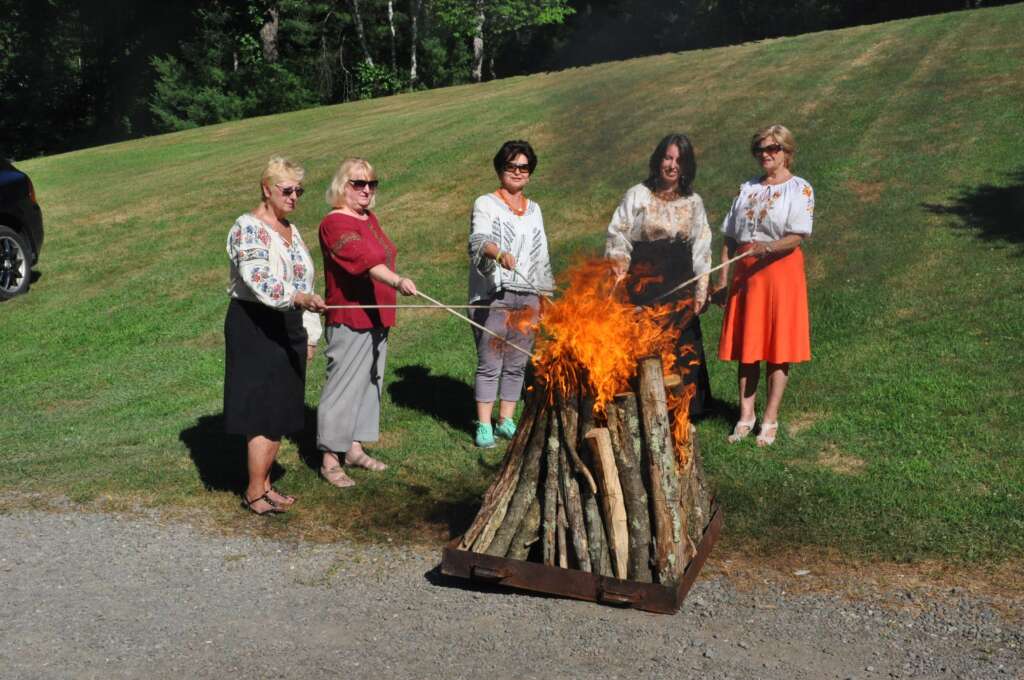
Q: What would you most want readers of this article about the Lemko Vatra to know about you?
Ms. Halyk: I would like people to know that I am a Lemkynia going back to my forefathers and I have no other ancestors except Lemkos. My father was Ivan Halyk, son of Daniel from the village of Krzyzówka, and my mother was Stefania Repel, daughter of Peter from Roztoka Wielka (both near Krynica). My relatives terribly missed Lemkivshchyna their whole lives, where they left not only their houses, churches, family graves, mountains and forests. It seemed to me that they left their souls there, and they lived in exile in only their physical bodies. They told us daily about life “at home,” sang Lemko songs, spoke Lemko and survived very bitter times in the Soviet Union. This pain, this hard injustice burns me, as it once burned them.
Therefore, when Ukraine became independent and it was possible to write about this, I wrote my first book “Lemkivshchyna – the land of our ancestors,” which outlined the brief history of the region, as well as the genealogy of our big family starting from our expulsion from Poland to Soviet Ukraine through the present day. And, in 2015-2016, I published the “The Memory Books of Lemkivshchyna 1944-1946” in three volumes, where I compiled lists of all Lemkos who were evicted to the USSR from 1944-1946 (143,610 people). Nowadays, I try to do everything possible so that the expulsion of Lemkos and all Ukrainians from our native land will be recognized as a crime, and so that those exiled will be recognized as victims of repression by the totalitarian communist regimes. I do this so that exile will cease to burn each of us, the descendants of those exiled, and the souls of those who have already left this world will rest easier after all their difficult earthly trials.
Also, I would like to express my heartfelt gratitude to all the Lemkos of America for their great in preserving their culture and identity. In particular, I would like to thank the OOL leaders: Mark Howansky, Andriy Khomyk, and Mykhailo Chomyk, who are members of the Presidium of SFULO, as well as to other members of OOL and other Lemkos in America for their support of Lemko and greater Ukrainian causes in the United States, Ukraine, and around the world. Visiting the United States, as well as Canada, contributed to my study of the work of these organizations, their needs and achievements, and promoted new, interesting ideas and problem-solving. I am sincerely grateful to all those who organized my visit, and wish you all a big, Lemko “Боже заплат” (God bless) for your kindness, sincerity, and work!
Ms. Doszna: Above all, I would want them to know that I warmly think about them and that I would like to support them in their efforts to build good relations with Lemkos in the old country in particular, but also with Lemkos around the world. Let’s build bridges, build friendly relations, meet and enrich each other. I am happy that I could, for a moment, be with you and present you with a part of my heart and my life. Thank you for the great atmosphere that I experienced at the Vatra and for showing me America and your achievements.
Photo credits go to Julie Wislocki

